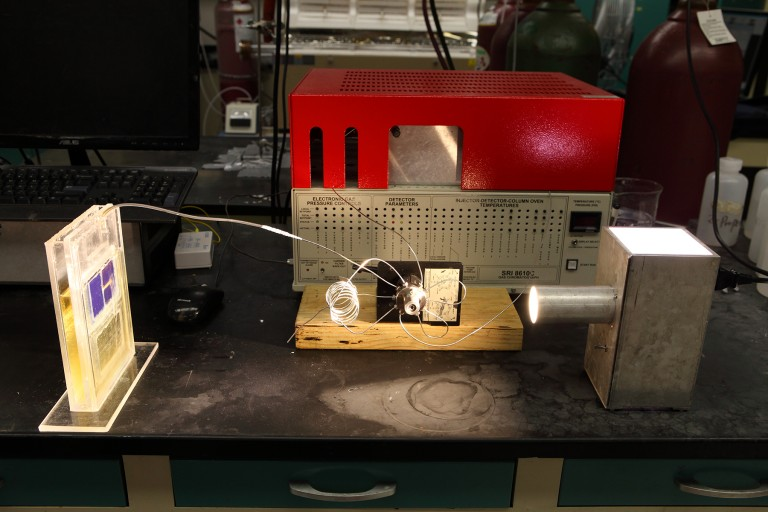Despite the dazzling growth of wind, solar and electric cars, we are going to put a lot of carbon into the atmosphere over the next half-century. Despite the best efforts of scientists to scrub CO2 from the skies, existing carbon-capture technologies remain too expensive to be practical.
This week produced a ray of hope. Researchers at the Argonne National Laboratory have developed a more cost-effective form of carbon capture — an artificial leaf.
The artificial leaf mimics photosynthesis. Just as a plant uses the sun’s energy to transform water and carbon dioxide into glucose and oxygen, the artificial leaf uses the sun’s energy to transform carbon dioxide into carbon monoxide.

Like carbon dioxide, carbon monoxide is a heat-trapping greenhouse has, but unlike carbon dioxide, it can be made into a burnable fuel. Fuel from the artificial leaf is effectively carbon neutral. It recycles atmospheric carbon, unlike petroleum, which is comprised of carbon that was previously buried underground.
The artificial leaf is cheap and efficient thanks to the low cost of the catalyst. Plants use an enzyme to catalyze photosynthesis. The artificial leaf uses tiny flakes of a tungsten-based compound. This is key, because scientists have previously used silver or other expensive metals in carbon capture. Tungsten is significantly cheaper.
If the artificial leaf could be made to produce synthetic gas for the cost of gasoline, it would be a game changer. Imagine farms of artificial leaves generating fuel for cars and trucks. Researchers say the technology could even be deployed on future missions to Mars, relying on the Red Planet’s CO2-rich atmosphere.
“We burn so many different kinds of hydrocarbons — like coal, oil or gasoline,” said Peter Zapol, a researcher on the project, “that finding an economical way to make chemical fuels more reusable with the help of sunlight might have a big impact.”
Jeremy Deaton writes for Nexus Media, a syndicated newswire covering climate, energy, politics, art and culture. You can follow him at @deaton_jeremy.


